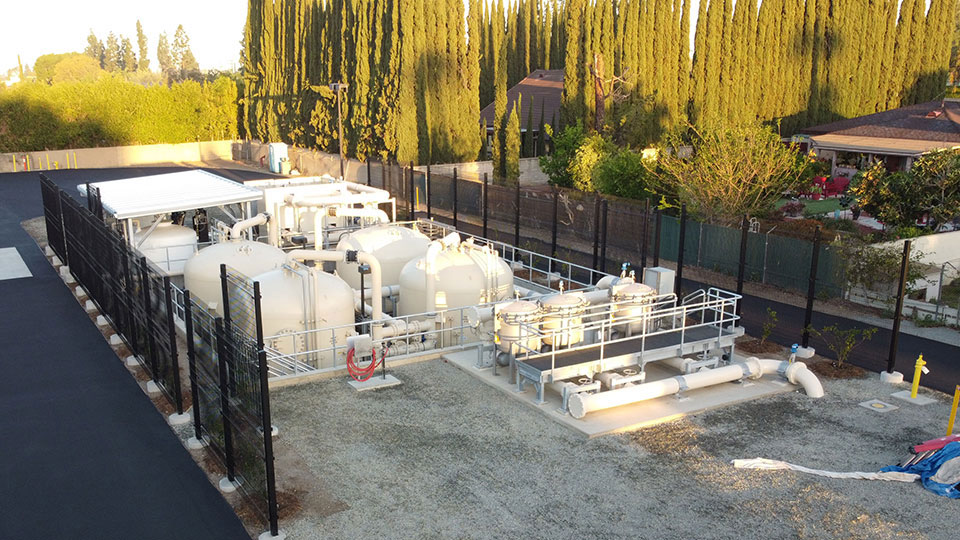How M270 Waste Management Help in the Safe Disposal of Toxic Materials
Wiki Article
How PFAS Treatment Makes Certain Clean and Lasting Water
The visibility of PFAS, generally known as "permanently chemicals," poses significant challenges to water quality and public health. The implications of these therapies expand past instant health and wellness benefits; they raise crucial questions about lasting water monitoring methods that need to be dealt with to guarantee a resilient future.
Recognizing PFAS Contamination
PFAS, or per- and polyfluoroalkyl materials, have actually emerged as a significant environmental issue because of their extensive frequency and perseverance in the setting. These artificial chemicals have actually been made use of in numerous commercial applications and customer items, consisting of non-stick cooking equipment, water-proof clothing, and food packaging, due to their unique residential or commercial properties such as water and grease resistance.The contamination of soil and water sources by PFAS occurs primarily via commercial discharges, firefighting foam use, and seeping from garbage dumps. pfas management. When released, these substances are resistant to destruction, bring about their buildup in the atmosphere. This determination raises crucial issues, as PFAS can take a trip lengthy distances through groundwater and surface water supply, impacting drinking water supplies and ecosystems

Health Risks of PFAS
The perseverance of PFAS in the atmosphere raises substantial health and wellness issues for individuals subjected to these compounds. Research has actually linked PFAS direct exposure to numerous unfavorable health impacts, including immune system disorder, liver damage, and raised danger of particular cancers.The universality of PFAS in consumer items, such as non-stick pots and pans, water-repellent textiles, and food packaging, additional amplifies the danger of exposure. Consuming water infected with PFAS is a considerable problem, as these chemicals can leach into groundwater resources. Vulnerable populations, consisting of children and those living near commercial websites, may deal with intense risks because of their creating systems and potential for greater direct exposure levels.
As recognition of these health dangers remains to expand, regulatory companies are starting to develop standards for PFAS levels in drinking water. Public wellness campaigns are important to minimize exposure and safeguard neighborhoods from the long-lasting results of these unsafe substances.

Cutting-edge Treatment Technologies
Just how can we effectively take on the challenges presented by PFAS contamination in water sources? Ingenious therapy technologies are arising as essential options in the quest for clean water. These approaches concentrate on the elimination or devastation of per- and polyfluoroalkyl substances (PFAS), which are well-known for their perseverance in the environment.One appealing strategy is adsorption using sophisticated products, such as turned on carbon and ion exchange resins. These materials have actually revealed efficacy in catching PFAS particles from water. An additional significant innovation is membrane layer purification, which utilizes nanofiltration and turn around osmosis to different pollutants at the molecular degree, hence offering a barrier against PFAS.
In addition, progressed oxidation processes (AOPs) pfas management employ strong oxidants to break down PFAS compounds right into safe results. This approach is specifically effective for treating highly contaminated water sources. Bioremediation methods, utilizing certain microbes, are additionally being discovered to weaken PFAS.
As study proceeds, crossbreed systems that incorporate numerous modern technologies might supply boosted efficiency, resolving the intricacies of PFAS contamination. The growth and execution of these cutting-edge therapy innovations are necessary actions toward guaranteeing the safety and sustainability of our water resources.
Advantages of Reliable PFAS Therapy
Successfully treating PFAS contamination in water resources substantially enhances public wellness and ecological safety. PFAS, usually described as "forever chemicals," are immune to deterioration and can accumulate in the body, leading to significant health and wellness risks such as cancer cells, liver damage, and body immune system dysfunction. By carrying out effective therapy methods, areas can decrease direct exposure to these damaging substances, eventually improving the health and wellness outcomes of their populations.
In addition, successful PFAS therapy adds to the conservation of local environments. Contaminated water can negatively influence water life and interfere with the delicate balance of neighborhood habitats. By making sure clean water, treatment procedures protect biodiversity and preserve eco-friendly integrity.
Furthermore, reliable PFAS remediation can promote public self-confidence in water quality. When neighborhoods are ensured that their drinking water is totally free from unsafe contaminants, it promotes a sense of security and health. This trust is vital for area involvement and assistance for ongoing water management efforts.
Future of Water Sustainability
Amidst expanding problems concerning water quality and scarcity, the future of water sustainability rests on ingenious techniques and joint initiatives. As areas encounter the looming threats of contaminants like PFAS, the advancement of innovative therapy modern technologies is essential. These technologies not only focus on the removal of hazardous substances however also promote the reuse and recycling of water, thereby decreasing general demand.Moreover, effective water governance plays an essential role in ensuring lasting techniques. Policymakers need to integrate scientific research with regulatory structures to develop clear guidelines for water usage and therapy. Stakeholder involvement, including local communities and sectors, cultivates a sense of shared duty and motivates sustainable practices throughout different sectors.
Financial investment in facilities is likewise critical; updating aging systems to integrate modern purification and purification methods can dramatically improve water quality. Welcoming green modern technologies, such as natural purification systems, can offer eco-friendly remedies.
Eventually, the future of water sustainability exists in an alternative approach that integrates modern technology, policy, and area involvement. By focusing on these elements, we can secure our water sources for generations to come, making certain clean and sustainable water for all.
Verdict
In conclusion, the effective treatment of PFAS is important for guaranteeing clean and sustainable water. Ultimately, robust PFAS treatment strategies contribute to long-term resilience in water management, cultivating public trust in water quality and advertising sustainable practices.Report this wiki page